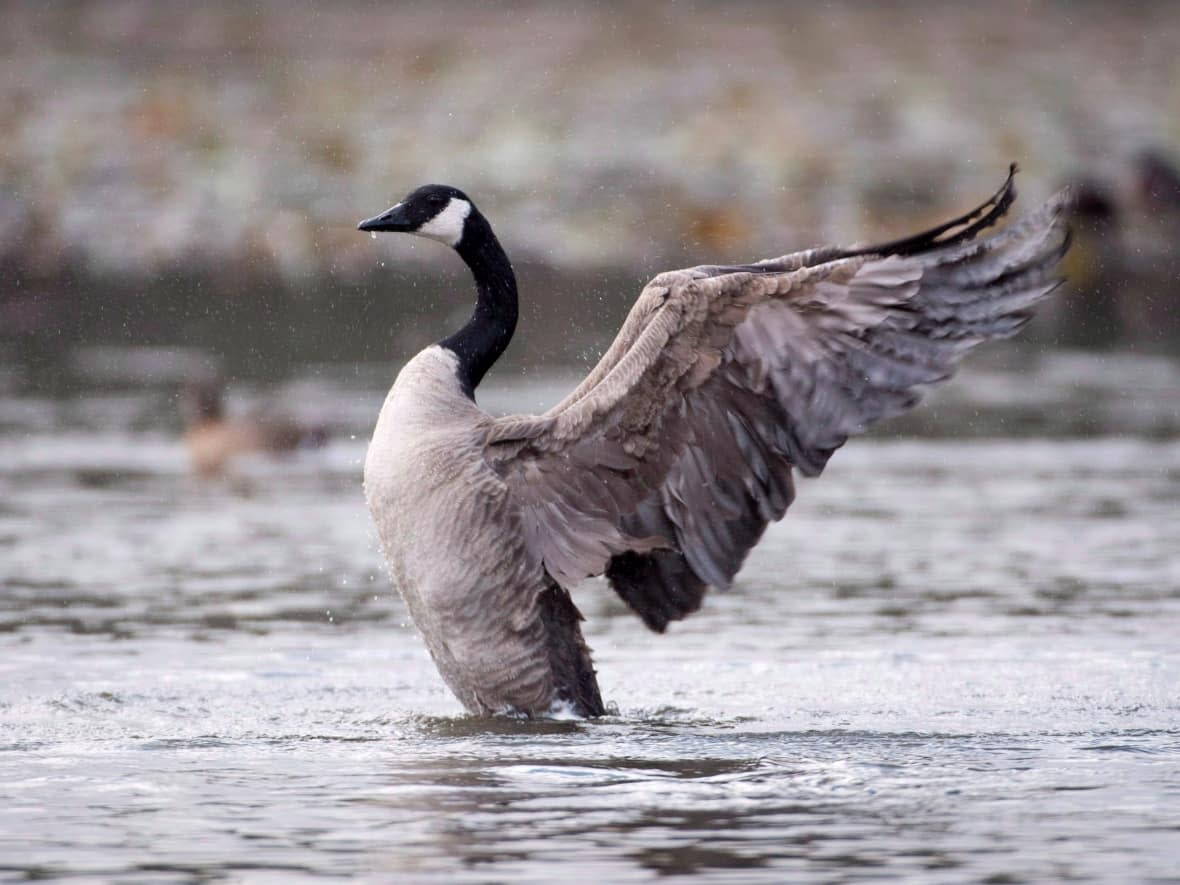Researchers mystified after Canada goose tagged in B.C. is spotted almost 3,000 km away in Chicago

How did a Canada goose that was tagged in Nanaimo, B.C., end up in Chicago?
That's the question that has left researchers at Vancouver Island University (VIU) scratching their heads.
Along with his colleagues, Eric Demers, an ornithologist and chair of the biology department at VIU, tagged a number of geese with white collars and metal leg bands starting in 2016, in order to track the birds' movements in the Nanaimo area.
A total of 400 geese were tagged and a website was set up where the public could report sightings.
Most of the geese tagged by researchers stayed around Vancouver Island or the Lower Mainland, with about 15 per cent travelling as far as Washington state or Oregon.
Geese that travel longer distances tend to fly north to south and vice-versa. But in October, the researchers got a hit on their website saying one of their birds had been spotted almost 3,000 kilometres east in the Windy City.
A person reported seeing the bird while jogging through Lincoln Park, made out the digits on its collar and reported it on their website.
"The first thing [I thought] is, well, it can't be true," Demers said of the report. "That's such a weird location for a goose to show up."
Prior to the Chicago report, the farthest afield one of the birds had been sighted was Boyle, Alta., almost 1,000 kilometres from Nanaimo, he said.
When asked about a possible explanation, Demers said it's possible the wayward bird "got pushed by a storm" or perhaps decided to follow some other birds.
Demers said the bird in question had been observed around the Nanaimo area for at least a year after it was banded and then went missing in 2017.
He said its reappearance thousands of kilometres away leaves him with more questions than answers.
"It makes us realize that other things than what we expect are possible," he said.
"It's possible we'll never get another sighting like this and this was more of an unusual sighting than is expected. But it does open the possibility that maybe some of the other birds did some of these interesting movements that we just haven't heard about yet."


